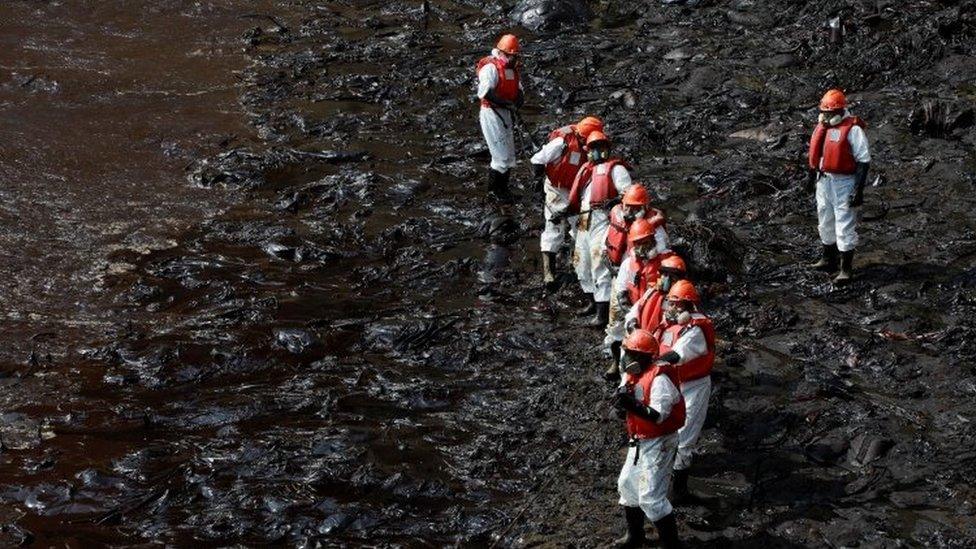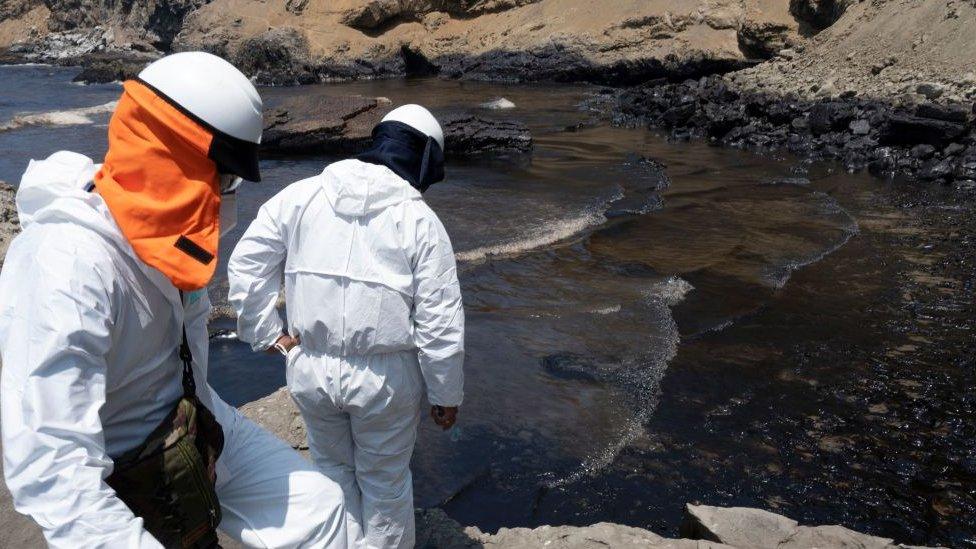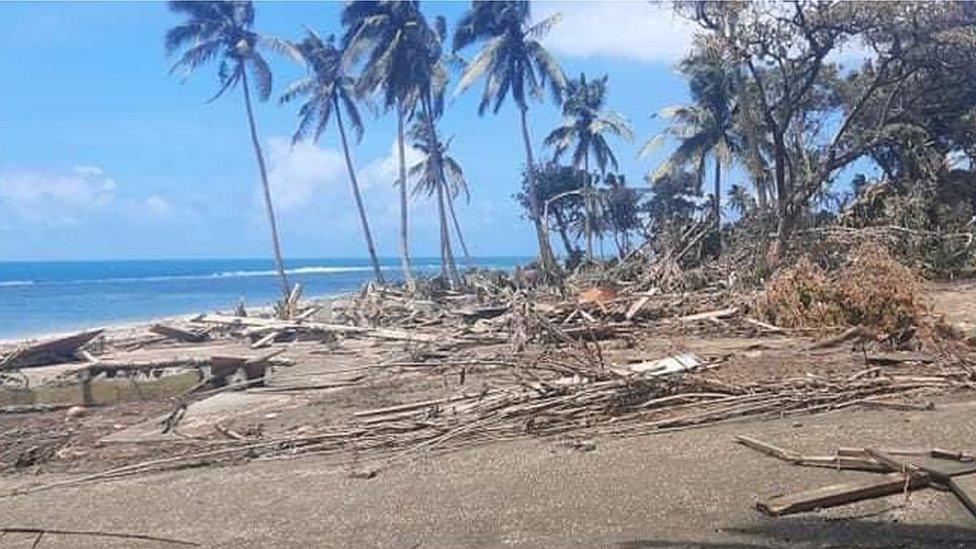Peru oil spill after Tonga eruption bigger than previously thought
- Published

Spanish oil firm Repsol says it is trying to clean the spill up "a quickly as possible"
An oil spill off the Peruvian coast earlier this month was twice as big as previously reported, according to the country's government.
Environment Minister Ruben Ramirez said Friday that almost 12,000 barrels of oil leaked into the sea on 15 January.
Officials described the spill as an "ecological disaster" to blame for the deaths of local fish and seabirds.
It happened when tanker at the La Pampilla refinery was hit by waves linked to a volcanic eruption on Tonga.
The site, about 30km (19 miles) north of Lima, is owned by Spanish oil company Repsol.
Peru has demanded compensation and prosecutors have opened an investigation into Repsol's role in the incident.
A judge granted a request on Friday to bar four executives from the firm leaving the country for 18 months amid the ongoing probe.
In a statement to the AFP news agency, Repsol said it would "fully cooperate with any criminal investigation" and said it was already aiding in the preliminary stages.
"Our main concern is cleaning up the environment. Repsol is putting all its efforts into cleaning up as quickly as possible," the company added.
BACKGROUND: Peru oil spill 'an ecological disaster'
Repsol said it had calculated the oil spilled to be equivalent to 10,396 barrels, after a revised government estimate that put the number at 11,900 - up from the 6,000 previously reported.
In an update on Friday, the environment ministry said a third of the spilled oil has been recovered from the ocean and across 20 beaches.
Some local fisherman have staged protests because they are unable to go out to sea and work because of the disaster.
Repsol previously blamed the leak on unusual waves triggered by a massive volcanic eruption in Tonga, more than 10,000km away.
The Mare Doricum, the Italian-flagged tanker involved in the spill, has also been banned from setting sail.
La Pampilla is built just off the town of Ventanilla in the Lima region and is Peru's largest refinery. It provides for more than half of the local fuel market.
Related topics
- Published20 January 2022

- Published19 January 2022

- Published23 February 2016

- Published14 March 2016
